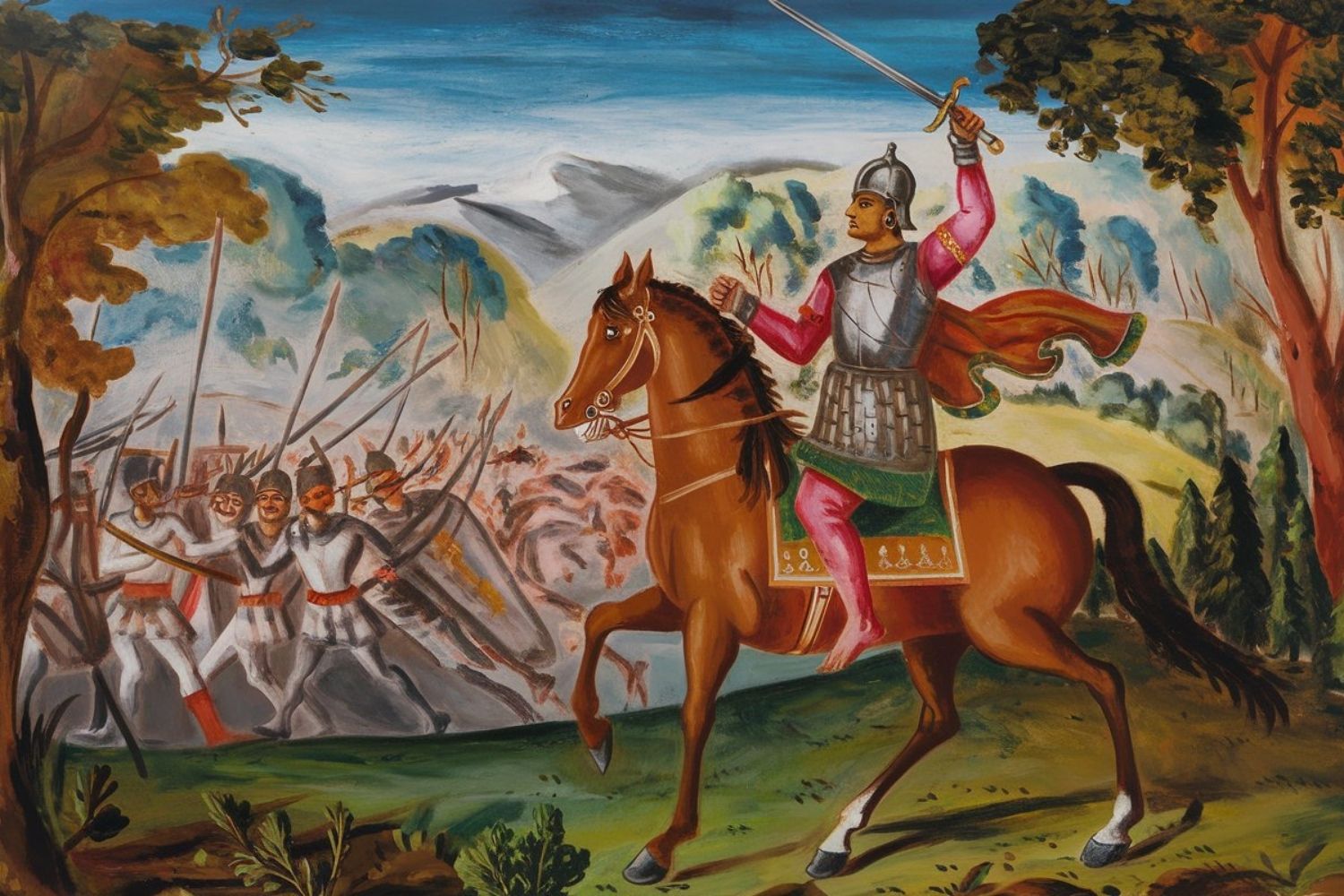
What sparked the Ranggalawe Rebellion? The Ranggalawe Rebellion, a significant event in Javanese history, was ignited by a mix of political ambition, personal loyalty, and regional power struggles. Raden Wijaya, the founder of the Majapahit Kingdom, appointed Ranggalawe as the regent of Tuban. However, tensions arose when Ranggalawe felt slighted by the favoritism shown to other nobles. This dissatisfaction, combined with his loyalty to his father-in-law, Arya Wiraraja, led Ranggalawe to challenge Raden Wijaya's authority. The rebellion was not just a simple power grab; it was a complex interplay of loyalty, honor, and the quest for power in the early days of the Majapahit Kingdom.
Key Takeaways:
- The Ranggalawe Rebellion was a 13th-century conflict in the Majapahit Kingdom, sparked by power struggles and personal rivalries among noble figures, leading to significant impacts on the kingdom's future policies and alliances.
- Ranggalawe, a brave nobleman, led a rebellion against the central authority of the Majapahit Kingdom, using guerrilla tactics and strategic maneuvers, ultimately shaping the kingdom's future and highlighting the challenges of maintaining centralized authority.
Background of the Ranggalawe Rebellion
The Ranggalawe Rebellion was a significant event in Indonesian history. It took place during the late 13th century in the Majapahit Kingdom. This rebellion was led by Ranggalawe, a nobleman who opposed the central authority of the kingdom.
- Ranggalawe was a nobleman from Tuban, a region in East Java.
- The rebellion occurred in 1295, during the early years of the Majapahit Kingdom.
- Raden Wijaya, the founder of Majapahit, was initially an ally of Ranggalawe.
- Ranggalawe's father, Arya Wiraraja, played a crucial role in helping Raden Wijaya establish the Majapahit Kingdom.
- The rebellion was partly fueled by Ranggalawe's dissatisfaction with the centralization of power in Majapahit.
Key Figures in the Rebellion
Several important figures played pivotal roles in the Ranggalawe Rebellion. Understanding these individuals helps to grasp the full scope of the conflict.
- Ranggalawe was known for his bravery and military skills.
- Nambi, another nobleman, was a close ally of Raden Wijaya and opposed Ranggalawe.
- Kebo Anabrang, a general in the Majapahit army, was instrumental in quelling the rebellion.
- Gajah Mada, who later became a prominent figure in Majapahit, was also involved in the conflict.
- Raden Wijaya had to balance loyalty to his allies and the stability of his kingdom.
Causes of the Rebellion
Understanding the causes behind the Ranggalawe Rebellion sheds light on the political dynamics of the Majapahit Kingdom.
- Centralization of power in Majapahit was a major cause of discontent among regional leaders.
- Ranggalawe felt marginalized by the central government despite his contributions to the kingdom.
- Economic factors also played a role, as regional leaders wanted more control over local resources.
- Personal rivalries between noblemen like Ranggalawe and Nambi exacerbated tensions.
- Arya Wiraraja's influence on Ranggalawe encouraged him to challenge the central authority.
The Course of the Rebellion
The rebellion itself was marked by several key battles and strategic maneuvers. These events highlight the intensity of the conflict.
- The Battle of Tuban was one of the first major clashes between Ranggalawe's forces and the Majapahit army.
- Ranggalawe's tactics included guerrilla warfare and surprise attacks.
- Kebo Anabrang's strategy focused on cutting off Ranggalawe's supply lines.
- The Siege of Tuban saw Ranggalawe's forces defending their stronghold against a larger Majapahit army.
- Ranggalawe's defeat came after a prolonged siege and several failed attempts to break through enemy lines.
Aftermath and Legacy
The aftermath of the Ranggalawe Rebellion had lasting impacts on the Majapahit Kingdom and its future policies.
- Ranggalawe's death marked the end of the rebellion, but his legacy lived on.
- Raden Wijaya implemented reforms to prevent future rebellions by addressing some of the grievances.
- Nambi's rise in power after the rebellion showed the shifting alliances within the kingdom.
- Gajah Mada's involvement in the rebellion foreshadowed his future role as a unifying force in Majapahit.
- The rebellion highlighted the challenges of maintaining a centralized authority in a diverse and expansive kingdom.
The Legacy of the Ranggalawe Rebellion
The Ranggalawe Rebellion stands as a significant chapter in Indonesian history. It highlights the complexities of loyalty, power struggles, and the quest for justice. Ranggalawe's defiance against King Kertanegara of Singhasari wasn't just a mere act of rebellion; it was a statement against perceived injustices and a fight for what he believed was right. This rebellion, though ultimately unsuccessful, left an indelible mark on the region's historical narrative. It serves as a reminder of the enduring spirit of resistance and the importance of standing up for one's beliefs. The tales of bravery, strategy, and sacrifice from this period continue to inspire and educate future generations. Understanding these events helps us appreciate the rich tapestry of Indonesia's past and the enduring legacy of its heroes. The Ranggalawe Rebellion is more than just a historical event; it's a testament to the resilience and courage of those who dare to challenge the status quo.
Frequently Asked Questions
Was this page helpful?
Our commitment to delivering trustworthy and engaging content is at the heart of what we do. Each fact on our site is contributed by real users like you, bringing a wealth of diverse insights and information. To ensure the highest standards of accuracy and reliability, our dedicated editors meticulously review each submission. This process guarantees that the facts we share are not only fascinating but also credible. Trust in our commitment to quality and authenticity as you explore and learn with us.
